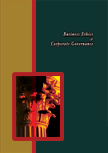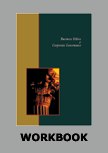IKEA's Social and Environmental Responsibility Initiatives
|
|
ICMR HOME | Case Studies Collection
Case Details:
Case Code : BECG058
Case Length : 22 Pages
Period : 1997-2005
Pub. Date : 2006
Teaching Note :Not Available
Organization : IKEA
Retail - Furniture
Countries : Sweden, US, China
To download IKEA's Social and Environmental Responsibility Initiatives case study (Case Code:
BECG058) click on the button below, and select the case from the list of available cases:

OR

Buy With PayPal
|
Price:
For delivery in electronic format: Rs. 400 ;
For delivery through Shipping & Handling Charges extra: Rs. 400 +Shipping & Handling Charges extra
»
Business Ethics Case Studies
» Case Studies Collection
» ICMR Home
» Short Case Studies
» View Detailed Pricing Info
» How To Order This Case
» Business Case Studies
» Case Studies by Area
» Case Studies by Industry
» Case Studies by Company
Please note:
This case study was compiled from published sources, and is intended to be used as a basis for class discussion. It is not intended to illustrate either effective or ineffective handling of a management situation. Nor is it a primary information source.
Chat with us

Please leave your feedback

|
|




<< Previous
Excerpts Contd...
Waste Management
Reducing the waste it generated and the management of that waste were important issues for IKEA. The company has been moving towards these goals by recycling wastes, repairing damaged products and reusing packaging material (Refer Table I for the Percentage of Wastes that are recycled or reused for energy production in IKEA).
|
This helped not just in saving resources, but also bringing in considerable monetary savings for the company. Each IKEA store had an 'environmental coordinator' who worked towards waste recycling and energy conservation, and also trained employees on environmental aspects.
In addition, the environmental coordinator organized educational programs for IKEA customers to understand the importance of the environment and to showcase IKEA's contribution in this area.
Each IKEA store had a separate compactor for collecting non-recyclable waste such as cardboard and plastic. Once these wastes were segregated, they were sent to the production department to see how they could be reused...
|

|
Energy Conservation
IKEA consumed a huge amount of energy for electricity, heating and air conditioning of its stores and warehouses. The company was trying to consciously reduce its energy consumption. In 2003, IKEA launched a 'Kill-a-Watt-Energy Saving Competition.'
The competition was open to all IKEA stores across the world. IKEA aimed to achieve reduction in energy consumption and also to create awareness among employees regarding electricity costs. By the end of the competition, IKEA had saved energy equivalent to providing electricity to 2,000 households, or two IKEA stores for a year. The competition was won by the IKEA store at Ho Chi Minn City in Vietnam. This store reduced its electricity consumption by 33%. It did so by installing a system that automatically switched off electrical appliances and shut down air conditioning systems after working hours. IKEA also made use of alternative energy sources to obtain electricity. The store in Pittsburgh, US had solar electric panels on the roof...
|

|
Extending CSR to the Suppliers
IKEA had a global web of 2,000 suppliers spread across 55 countries. To further its commitment towards the environment and society, IKEA launched 'The IKEA Way on Purchasing Home Furnishing Products (IWAY)'
in September 2000. The IWAY established the 'code of conduct' for IKEA's
suppliers to adhere to (Refer Table II for more details on Code of Conduct for
suppliers). The IWAY focused on legal compliance, working conditions of
employees and environmental compliance...
Exhibits
Exhibit I: Facts on IKEA
Exhibit II: IKEA's Foray Into Foreign Countries
Exhibit III: Achievements of IKEA-UNICEF-CREDA Project
Exhibit IV: The Natural Step
Exhibit V: Green Steps Taken by IKEA
Exhibit VI: IKEA's Environmental Initiatives at Renton
Exhibit VII: Carbon Dioxide Emission from IKEA Operations in Europe
Exhibit VIII: Mode of Transport Employed by Ikea in Europe
Exhibit IX: IKEA's Public Transport Requirements
Exhibit X: Top Five Countries Supplying Raw Material to IKEA
Exhibit XI: Project Activities Initiated by IKEA and WWF in China
|
|









